Bonnie Rychlak at The Viewing Room
There are artists who while professing pursuit of certain goals, such as an institutional critique or a formalist strategy of truth to materials, or an ecologically pointed realism, are also and perhaps primarily obsessed with another issue, say aesthetics for the social critic or brute power for the purist or fears of personal mortality for the ecologist. In fact maybe this is true for all artists, and maybe that is why–as an overview of her work reveals–Bonnie Rychlak has made the very idea of “hidden depths“ into a persistent trope.
Take her brilliant parodies of the minimalist cube. As a feminist riposte to the po-faced embargoes of Judd et al, they are priceless, converting mutely literal primary structures into no doubt rage-inducing upholstered, pillowed, buttoned and bowed boxes. But what also develops in this decorative re-surfacing is a paradoxical suggestion of depth. Padded, essentially wrapped now—like a present, if you will—the cubes suddenly acquire an inside, or at least the lure of an “inside.” But the conjured interior is never really accessible or even really fully present. There is no Pandora-like possibility of opening the box; the viewer is rather subliminally aware that there is an “underneath.” Rychlak has on occasion mirrored her rectangles, but unlike Judd’s reflective finishes, the mirrors are on the inside of an open cube. Whereas Judd’s polished objects push the audience out centrifugally, away from the sculptures, by replicating their surroundings, the architecture of the room, Rychlak’s mirrors force the viewer to look inside the box there to see not only the duplicated surroundings, but also the perceiving subject, thus providing the elusive “content.” All this without reasserting some essentialist center, some immutable core of “truth” or “fact.” Her method was simply inclusive rather than exclusive.
Perhaps most strongly illustrative of this invitation to plumb ultimately unassailable depths is the series based on photos of Rychlak’s own family. These snapshots with their potential for unhappy personal revelations, of secrets exposed, are perversely covered by thickly pebbled glass. Visibility is low—very low, so low that if figures can be discerned at all they are reduced to a wavering generality. An autobiographical “tell-all” remains innuendo, rumor, a whispered confidence withheld by the determinedly inaudible volume of the whisper.
Even the more recent focus on the American icon of the kidney-shaped swimming pool—a series of these forms cast in aqua-resin—enacts the same tantalizing push/pull. In a technically virtuosic maneuver, the plastic was pigmented in diaphanous layers, mimicking the enticing refreshment of an ever-deepening cool suburban recreational blue. Diving in, thus seductively posited, would of course result in the most painful of belly flops against the hard resin surface. Literally upping the ante, a penny embedded in the sculpture, lying at the bottom of the pool, activates our instinct for salvage but treasure buried it remains. Looking at these perfect blossoms of American affluence, it’s hard not to think of Benjamin, the graduate, hiding out on the bottom of the family pool with the admonition to think “plastic” reverberating in his head.
The newest sculptures make all of this more explicit, taking the double bind into the very logic of their facture. Returning to her favored wax medium, Rychlak makes these latest works in the following manner: detritus such as plumbing and electrical elements are dropped into the molten wax block; photographs are taken from two or three viewpoints of damaged and fragmented archaic figures—pre-Columbian, Greek, Roman; drawings are made of each photograph and an overlay created of the drawn vantage points, resulting in one composite drawing which then serves as a guide for carving the wax shape. The carving process, however, detours around the interruptions of the enclosed objects. The emergent sculptures look like fossils, sections jutting out like a bolus on a tree, growing around some foreign implant or early wound, tumuli over ancient burial sites. And they do seem to pose archeological riddles—are they Mayan, are they the cryptic remnants of a Borg-like parasitic culture in which organisms host inorganic parasites visible as prosthetic hoses, tubes and wires?
Why this sudden abandoning of what had seemed to be an investigation of triumphal Americanism, a critical framing of the apogees of mid-century American modernism: in art New York minimalism; in architecture California affluence; in social science the middle class suburban family? One answer is suggested in the post-apocalyptic look of these new works. Chunks and lumps fused around metal wires, drains and other structural impedimenta, they evoke, despite their aqueous tint, the deformed black box found in the plane wreckage, or even the twisted debris from a terrorist attack.
Given all this, how farfetched is it to suggest that what Rychlak is positing here is the possibility that the great American success story is founded, as all success stories must be, on hiding, secreting. Achievement is built on the repressed term: women, familial rage, the toxicity of material progress. Indeed, there is a hint of Freud’s contention that violence is the bedrock of civilization and hence the source of its ultimate discontent—in which case a nodding reference to some of the West’s most ancient civilizations is more than apt. What is important about Rychlak’s critical project, however, is the recognition of the embedment—like her recent sculptures—of repression and achievement. Hence her critique is also homage, and must remain oblique to avoid being dishonest. Some commentators confuse ambivalence with equivocation. Not so. Ambivalence is the only honest response to the cultural imperative, the admission that all with which we are identified, all that is the repository of our own personal ambitions is tied up in this ferocious hidden disenfranchisement and that we are each caught, both implicated and victimized. It is the delicate balance of celebration and sly, sometimes humorous undermining that keeps Rychlak’s work from ever falling into the anhedonic, that fuels its pleasures.
Ephraim Birnbaum
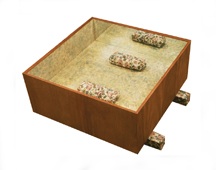
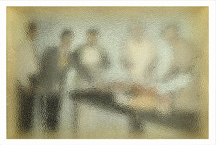
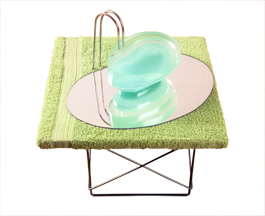
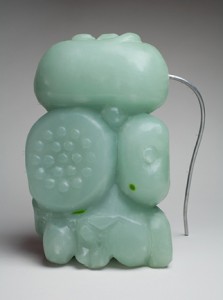
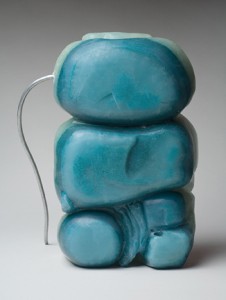
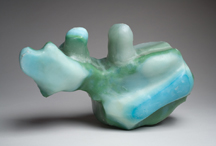






Excellent review of the work of Bonnie Rychlak. Well deserved.